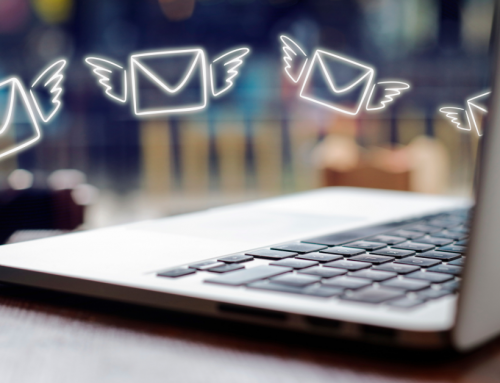“You sent me an email? Huh. I never got it.”
It’s a huge bummer when an email to a client ends up in the spam folder. It makes you wonder how many of your other emails, to other clients, are getting marked as spam.
And it really makes you wonder if your mass email marketing campaigns—the ones you send to thousands of contacts at a time—are being seen at all.
Most people never check their spam, unless they’re specifically looking for a lost email that they were expecting. So those mass emails are as good as gone. As good as never-even-sent.
Luckily, there are solutions! In this blog post, learn how to improve your email deliverability for both bulk mail and individual emails.
1) Follow CAN-SPAM Act requirements.
The CAN-SPAM Act, established by the FTC, outlines requirements for all commercial messages—meaning any type of electronic mail message that promotes your business or the content on your business website. Be sure that all of your email campaigns comply with the following rules:
- Use accurate information in the “From” and “Reply-To” fields. Don’t pretend to be someone else.
- Write a subject line that accurately reflects the content of your message. Don’t be misleading.
- Include your business’s physical postal address in the message.
- Provide clear instructions for how a recipient can opt out of your emails. Make sure the unsubscribe process is easy to do, and honor opt-out requests within 10 days.
Read more about CAN-SPAM on the FTC website.
2) Ask your IT person to get your email domain authenticated.
Email authentication proves that you are a verified sender—and not a spammer trying to send fraudulent emails. The process of authenticating your email domain is extremely technical, so unless you know how to add an SPF or TXT record to your DNS, you’ll want to leave it to your IT pal.
(Your CRM provider probably has instructions that will be useful for your IT person—you can find Realvolve’s email authentication details here.)
3) Give new contacts a heads-up.
Sometimes, despite our best efforts, our emails still end up in the spam folder. If you’ve been burned before, be proactive about it when you meet with a new prospect. Before you part ways after your first phone call or in-person meeting, give them your email address and tell them to be on the lookout for a message from you. Let them know that it might end up in spam, and kindly request that they mark it as “Not Spam,” should the situation arise.
4) Avoid using spam triggers in your subject line.
There are certain words that will immediately trigger spam filters. Common trigger words, according to Alli Tunell of BombBomb, are free, sale, and discount. You should also avoid using all-caps or excessive punctuation. And never try to fake them out by adding a “Re:” to the beginning of your subject line.
5) Personalize emails with the recipient’s first name.
If you have a high-quality, pristine database—one in which every contact is a real person, with a first and last name along with their email address—you can personalize your automated emails. Not only will this make your emails feel more authentic, but it will also makes them less likely to be marked as spam.
6) Be cautious with purchased email lists.
There are list providers out there who seem to have found a loophole in the CAN-SPAM Act—they provide lists of email addresses that have opted in to “affiliate marketing”—but if I were you, I’d stay away from those services.
Purchased email lists come with quite a few risks. For starters, the people on that list didn’t specifically ask for your emails, so they are more likely to mark you as spam than people who actually opted in. Even if they don’t mark you as spam, they’re not likely to open your emails. And, as Tunell points out, “The more people who ignore your emails—or worse, mark your emails as spam and report them—the more likely email providers will send all of your emails to the spam folder.”
A purchased list could also contain a spam trap—an unused or inactive email address that has been repurposed as a tool for identifying accounts that send unsolicited mass emails.
7) Maintain a suppression list.
A suppression list is a list of contacts you absolutely DO NOT want to send emails to. This list should contain all of the email addresses that have unsubscribed, bounced, marked you as spam, or replied with an angry all-caps message.
8) Send personal follow-up emails to your most engaged contacts.
Check your analytics to see which contacts are opening and clicking links in your emails, and reach out to these people individually. You know they are likely to open your personal emails, and it will show them (and the email service provider) that you are a real person, which will help your emails make their way into a more prominent spot in their inboxes.
Get your emails delivered, opened, read, and clicked.
Even when you do make it past the spam filters, it’s still tough to get your emails opened, read, and clicked by your prospects and clients. There is so much noise and distraction in a person’s inbox and on their phone. That’s why it’s also important to know how to write a compelling subject line and engaging content.
But the first step, of course, is making it to their inbox. So follow the steps above to prevent your emails from getting wrongly accused as spam.





